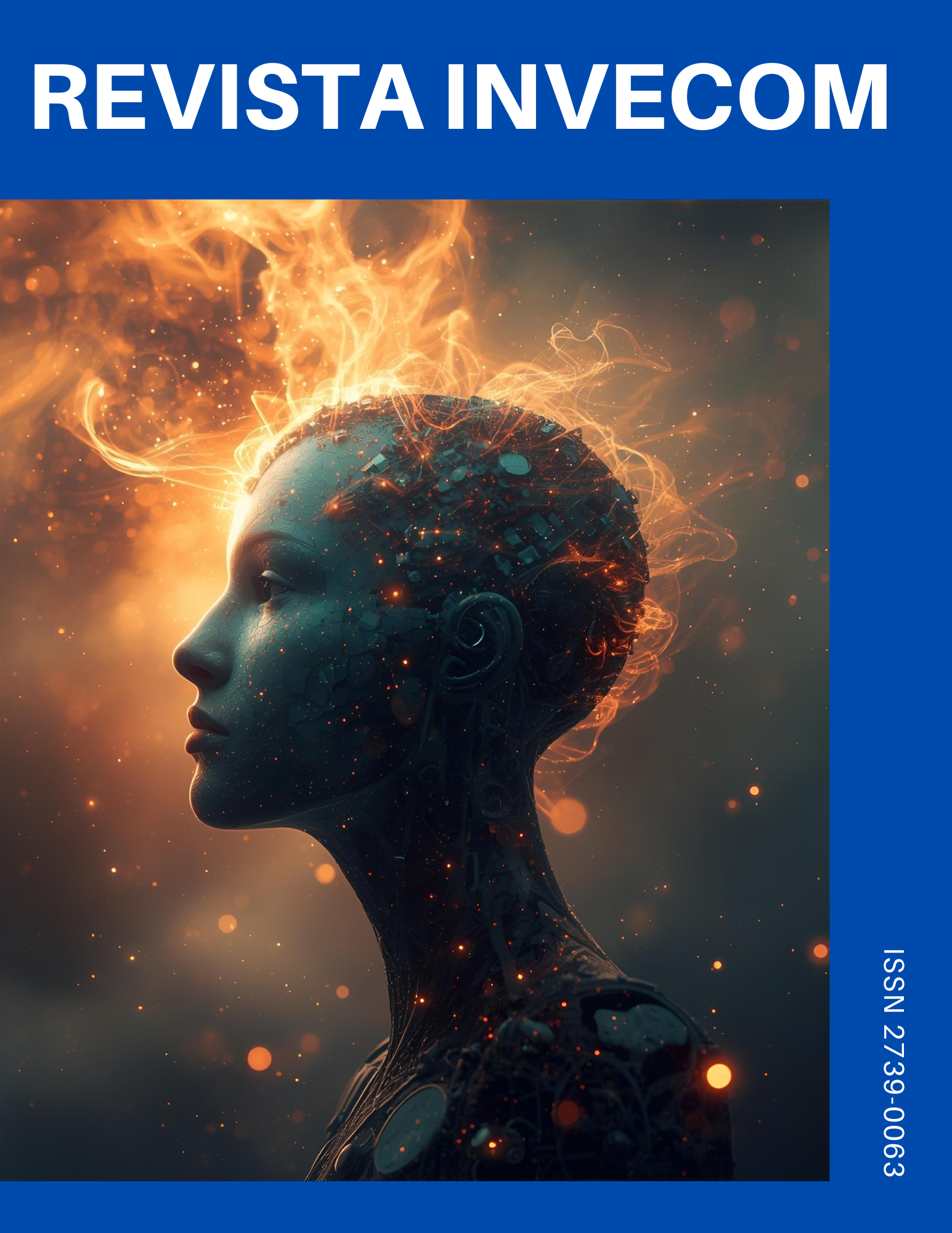Creencias y actitudes hacia la física y su relación con el rendimiento académico
DOI:
https://doi.org/10.5281/zenodo.17318096Palabras clave:
actitud hacia la física, creencias hacia la física, rendimiento académicoResumen
Las actitudes y creencias hacia la física están influenciadas por factores individuales, educativos y sociales que inciden directamente en el rendimiento académico. El presente estudio tuvo como objetivo analizar la relación entre las creencias y actitudes hacia la física y el rendimiento académico en estudiantes de Bachillerato General Unificado (BGU). Se empleó un enfoque cuantitativo con un diseño no experimental, de tipo transversal y alcance correlacional, en una muestra de 301 estudiantes. El instrumento fue validado por siete expertos en enseñanza de la física, se aplicó una prueba piloto y se evaluó su fiabilidad mediante el coeficiente alfa de Cronbach. Para el análisis de las variables, se calculó el coeficiente de correlación de Spearman entre las dimensiones evaluadas y el rendimiento académico, además de aplicar pruebas t de Student para contrastar diferencias de medias. Los resultados revelaron correlaciones positivas y estadísticamente significativas entre el rendimiento académico en física y dimensiones como el interés por la materia, la autoeficacia, la actitud hacia el aprendizaje de la física, la percepción del docente y el contexto educativo. Asimismo, se observó que las estudiantes mujeres obtuvieron, en promedio, un rendimiento académico superior al de los hombres, y que la variable sexo mostró una asociación significativa con el rendimiento únicamente en el grupo femenino. En conclusión, el estudio confirma que mantener creencias y actitudes positivas hacia la física se asocia con un mejor rendimiento académico en esta asignatura, lo que resalta la importancia de fortalecer estrategias pedagógicas orientadas al desarrollo de percepciones favorables hacia la ciencia en el contexto escolar.
Descargas
Referencias
Adams, W., Perkins, K., Podolefsky, N., Dubson, M., Finkelstein, N., & Wieman, C. (2006). New instrument for measuring student beliefs about physics and learning physics: The Colorado Learning Attitudes about Science Survey. Physical Review Special Topics - Physics Education Research, 2(1). https://doi.org/10.1103/PhysRevSTPER.2.010101
Appiah-Twumasi, E. (2024). Predicting physics students’ academic performance: The impact of attitude, self-efficacy, and personality traits. Journal of Research in Education and Pedagogy, 1(2). https://doi.org/10.70232/jrep.v1i2.13
Aprilia, A., Kuswanto, H., & Dwandaru, W. (2023). Attitudes and beliefs toward physics: A mini review. Revista Mexicana de Física E, 20(2). https://doi.org/10.31349/RevMexFisE.20.020212
Aydin Gürler, S., & Baykara, O. (2020). Development of an attitude scale for physics courses and a review of student attitudes. Journal of Baltic Science Education, 19(1), 6–24. https://doi.org/10.33225/jbse/20.19.06
Bates, S., Galloway, R., Loptson, C., & Slaughter, K. (2011). How attitudes and beliefs about physics change from high school to faculty. Physical Review Special Topics - Physics Education Research, 7(2). https://doi.org/10.1103/PhysRevSTPER.7.020114
Blömeke, S., Kaiser, G., König, J., & Jentsch, A. (2020). Profiles of mathematics teachers’ competence and their relation to instructional quality. ZDM, 52(2), 329–342. https://doi.org/10.1007/s11858-020-01128-y
Chala, A. (2020). Secondary school students’ beliefs towards learning physics and its influencing factors. Research on Humanities and Social Sciences, 10(7), 37.
Danladi, J. M., & Adamu, J. (2025). Students’ attitude toward physics as predictors of academic performance in post-basic school in Adamawa State, Nigeria. Vunoklang Multidisciplinary Journal of Science and Technology Education, 13(1), 94–103. https://doi.org/10.5281/zenodo.14908435
Dehbozorgi, N., Maher, M., & Dorodchi, M. (2021). Does self-efficacy correlate with positive emotion and academic performance in collaborative learning? 2021 IEEE Frontiers in Education Conference (FIE), 1–8. https://doi.org/10.1109/FIE49875.2021.9637471
Figueiredo, E., Fonseca, C., & Paiva, T. (2024). Self-efficacy and academic performance in higher education: A case study. European Public & Social Innovation Review, 9, 1–16. https://doi.org/10.31637/epsir-2024-960
Fishman, J., Yang, C., & Mandell, D. (2021). Attitude theory and measurement in implementation science: A secondary review of empirical studies and opportunities for advancement. Implementation Science, 16(1), 87. https://doi.org/10.1186/s13012-021-01153-9
Fraser, B. J. (1981). Test of Science-Related Attitudes [Dataset]. https://doi.org/10.1037/t55068-000
INEVAL. (2020). Informe de resultados nacionales: Examen de grado 2019–2020. https://cloud.evaluacion.gob.ec/dagireportes/nacional/2019-2020.pdf
INEVAL. (2023, diciembre 7). Banco de información nacional: Informes y resultados. https://evaluaciones.evaluacion.gob.ec/BI/nacionales-informes-y-resultados/
Jamil, M., Hafeez, F., & Muhammad, N. (2024). Critical thinking development for 21st century: Analysis of physics curriculum. Journal of Social & Organizational Matters, 3, 1–10. https://doi.org/10.56976/jsom.v3i1.45
Kaur, D., & Zhao, Y. (2017). Development of Physics Attitude Scale (PAS): An instrument to measure students’ attitudes toward physics. The Asia-Pacific Education Researcher, 26(5), 291–304. https://doi.org/10.1007/s40299-017-0349-y
Lee, B., Aiyappa, R., Ahn, Y., Kwak, H., & An, J. (2025). A semantic embedding space based on large language models for modelling human beliefs. Nature Human Behaviour. https://doi.org/10.1038/s41562-025-02228-z
Li, Y., & Singh, C. (2023). Impact of perceived recognition by physics instructors on women’s self-efficacy and interest. Physical Review Physics Education Research, 19(2), 020125. https://doi.org/10.1103/PhysRevPhysEducRes.19.020125
Limbaga, F., & Borlio, J. (2025). Science attitude and science anxiety on the academic performance of Grade 10 learners. International Journal of Research and Innovation in Social Science. https://doi.org/10.47772/IJRISS.2025.903SEDU0289
Malespina, A., Schunn, C., & Singh, C. (2023). Bioscience students’ internalized mindsets predict grades and reveal gender inequities in physics courses. Physical Review Physics Education Research, 19(2), 020135. https://doi.org/10.1103/PhysRevPhysEducRes.19.020135
Mao, P., Cai, Z., He, J., Chen, X., & Fan, X. (2021). The relationship between attitude toward science and academic achievement in science: A three-level meta-analysis. Frontiers in Psychology, 12. https://doi.org/10.3389/fpsyg.2021.784068
Martínez Rebollar, A., & Campos Francisco, W. (2015). Correlación entre actividades de interacción social registradas con nuevas tecnologías y el grado de aislamiento social en los adultos mayores. Revista Mexicana de Ingeniería Biomédica, 36(3), 181–191. https://doi.org/10.17488/RMIB.36.3.4
Northcote, M. (2020). Educational beliefs of higher education teachers and students: Implications for teacher education. Australian Journal of Teacher Education, 34(3), 69–81. https://doi.org/10.3316/informit.787830473908158
OCDE. (2025). Gender differences in education, skills and STEM careers in Latin America and the Caribbean. OECD. https://doi.org/10.1787/4ea07281-en
Paoloni, P., & Bonetto, V. (2013). Creencias de autoeficacia y rendimiento académico en estudiantes universitarios: Propuestas para favorecer aprendizaje y motivación. https://ri.conicet.gov.ar/handle/11336/98923
Real-Delor, R., Tirado, A., Ojeda, I., Muñoz, E., Cáceres, E., Almeida, M., Lugo, D., Villasanti, A., Salles, V., Cañete, N., Ferreira, M., Pagnussatt, M., Miranda, A., & Vera, G. (2024). Factores asociados al rendimiento académico en estudiantes universitarios de Latinoamérica en 2023. Investigación en Educación Médica, 13(51). https://doi.org/10.22201/fm.20075057e.2024.51.23580
Reyes, G. (2024). La desigualdad educativa en las zonas rurales del Perú. Revista Arbitrada de Educación Contemporánea, 1(1). https://doi.org/10.5281/zenodo.12702246
Rodríguez, D., & Guzmán, R. (2019). Rendimiento académico y factores sociofamiliares de riesgo: Variables personales que moderan su influencia. Perfiles Educativos, 41(164). https://doi.org/10.22201/iisue.24486167e.2019.164.58925
Rokeach, M. (1970). Beliefs, attitudes and values: A theory of organization and change. https://www.chsieh.com/uploads/4/4/7/9/4479813/beliefs_attitudes_values_rokeach_1968_1970.pdf
Salgado Oviedo, P. (2025). Desigualdad educativa en zonas rurales y urbanas del Ecuador. Perspectivas Sociales y Administrativas, 3(1), 5–16.
SENESCYT. (2022). Acceso a la educación superior – Demanda. Servicios Senescyt. https://siau.senescyt.gob.ec/acceso-a-la-educacion-superior-demanda/
Suarez, A., Baccino, D., Monteiro, M., & Marti, A. (2022). Differences in the attitudes and beliefs about science of students in the physics-mathematics and life sciences areas and their impact on teaching. Revista Mexicana de Física E, 19(2). https://doi.org/10.31349/RevMexFisE.19.020207
Villalva Cárdenas, E., & Nieto, A. (2018). Actitudes y creencias en el aprendizaje de la física clásica. https://doi.org/10.29018/978-9942-8689-7-8
Vitriol, J., Banaji, M., & Lowe, R. (2024). Change in attitudes and beliefs about implicit bias education: A demonstration among members of a police department. Philosophical Psychology, 37(6), 1539–1571. https://doi.org/10.1080/09515089.2023.2296585
Wang, M., & Degol, J. (2017). Gender gap in science, technology, engineering, and mathematics (STEM): Current knowledge, implications for practice, policy, and future directions. Educational Psychology Review, 29(1), 119–140. https://doi.org/10.1007/s10648-015-9355-x
Xu, S., Velasco, V., Hill, M., Tran, E., Agrawal, S., Arroyo, E., Behling, S., Chambwe, N., Cintrón, D., Cooper, J., Dunster, G., Grummer, J., Hennessey, K., Hsiao, J., Iranon, N., Jones, L., Jordt, H., Keller, M., Lacey, M., … Theobald, E. (2025). Active learning’s impact on student course performance in STEM varies by type and intensity. bioRxiv. https://doi.org/10.1101/2025.06.01.657285
Descargas
Publicado
Número
Sección
Licencia

Esta obra está bajo una licencia internacional Creative Commons Atribución 4.0.
La revista se acoge a la licencia Licencia Atribución (CC BY), permitiendo la posibilidad de copiar, distribuir, exhibir, y producir obras derivadas, siempre y cuando se reconozca y cite al autor.
















